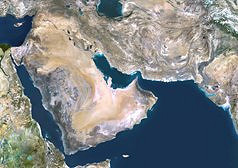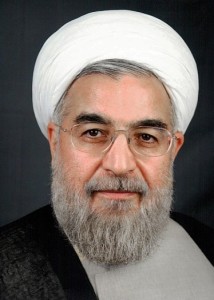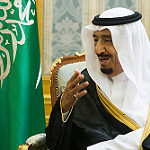 While America is absorbed with national elections and Europe with migrant issues, events march on in the Middle East.
While America is absorbed with national elections and Europe with migrant issues, events march on in the Middle East.
On February 26, 2016, The Wall Street Journal published an article with the headline,
“Israel’s Options in a Chaotic Middle East — Faced with a new Palestinian uprising, Israelis have shelved the idea of a two-state solution – and have found surprising new allies in a disintegrating Middle East”
It details what Israel has done to work with Palestinians toward a resolution of their conflict through negotiations and human effort.
A Wall Street article usually requires a subscription; but this particular one was also posted here.
Iran or Saudi Arabia
The article’s author wrote,

Iran’s President, Hassan Rouhani
“Iran is emerging as the region’s dominant power, even as it remains on the nuclear threshold.”
A number of political experts would readily concur with that assessment while others might not. But few would argue against her as a power to be reckoned with even if they feel the number one position still belongs to Saudi Arabia.
Some comparisons will help to explain what is currently happening in the region and how that, for the moment, benefits the lone Jewish State.
Manpower or Money Power
Along with her nuclear program, Iran is said to have many more soldiers than her rival, Saudi Arabia. And they are thought to be much better trained as well. It’s felt that gives Iran a big edge and is motivating Saudi Arabia to court Israel.

Saudi Crown Prince and Minister of Defense
Others point to the fact that Saudi Arabia, oil rich in her own right, not only annually spends much more on up-to-date military equipment but can call on her wealthy Arab neighbors the Gulf States and Kuwait, should push come to shove, and probably other Arabs too. Plus, the United States and Europe are in her circle of her friends. Iran is seen as a threat Saudi Arabia will continue to contain, by whatever means, including befriending Israel.
Iran’s options for assistance from within the Middle East are considerably more limited though Russia, a member of the nuclear club, is her ally.
Other Factors
Compounding the matter, is that the Arabs, Iranians, and Israeli Jews look on each other as three different peoples.
But the religious element trumps everything else. In part, that’s because government leaders, and wanna-be leaders, there are not above exploiting religion if and when it suits them.
An August 25, 2014 – Middle East In the News article touched on the key similarities and differences in End Time views held by Jews, Sunnis, and Shiites.
Also Daesh, aka ISIS or ISIL, has further destabilized the entire region.
The Wall Street Journal added,
“And yet—precisely because of the Iranian threat against the Sunni world and of regional instability generally —the Arab world is opening up to Israel in unprecedented ways.”
But don’t expect this to last.
Photo Credits: Satellite View Courtesy of NASA , License: CC BY 2.0; Iranian President by BotMultichillT; Saudi Crown Prince, DoD Photo by D. Myles Cullen